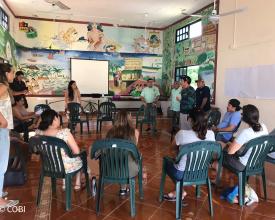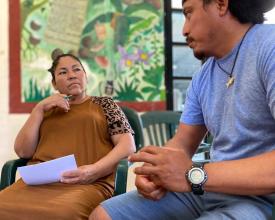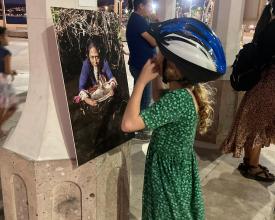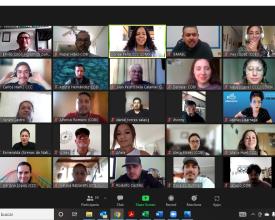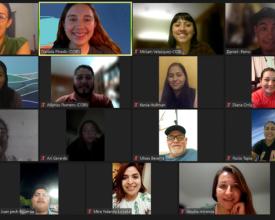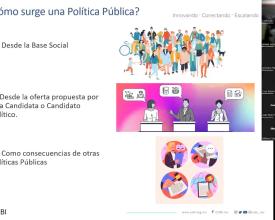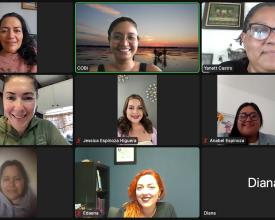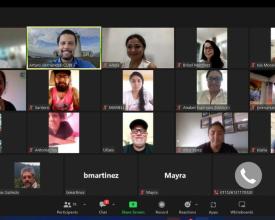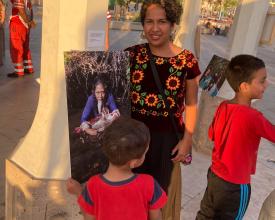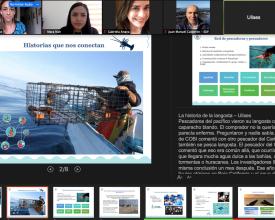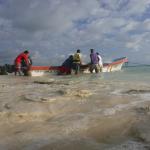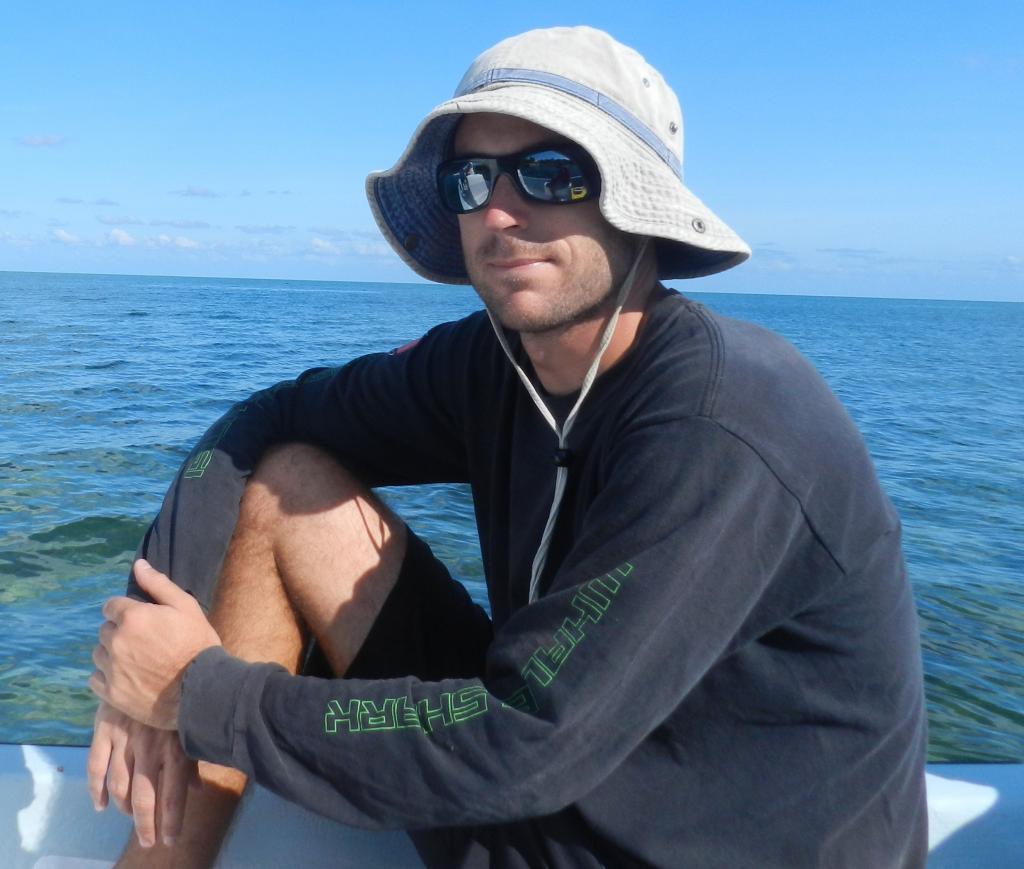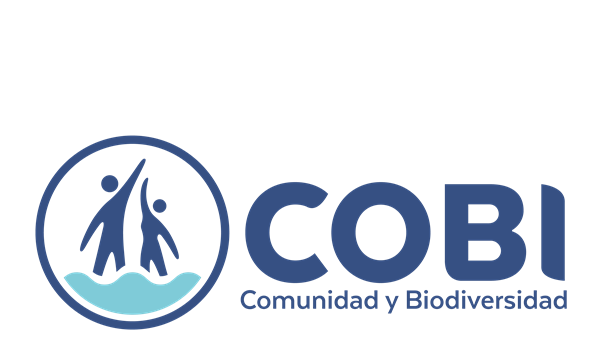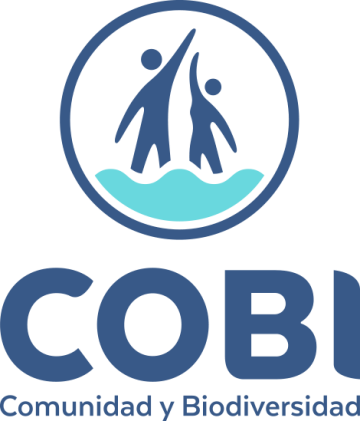
Strengthening fisheries governance through a collective network.
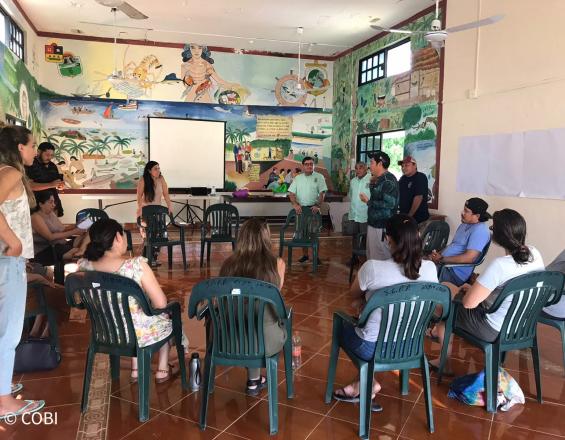
Although fishermen and fisherwomen in Mexico have experience and knowledge about marine resources and the environmental problems that impact their communities, there has not been an articulated, open and horizontal organizational space to work collectively for a common good at the national level. This has meant that their voice has not been heard in decision-making spaces and has prevented the transfer of knowledge for the implementation and replication of community solutions to achieve healthy oceans. This is why women and men dedicated to fishing, as well as fishing organizations, have joined together in a Collective Action Network to: 1) generate citizen science, 2) transmit knowledge between communities and fishing organizations, 3) seek intergenerational wellbeing of communities, 4) generate alliances for good fishing practices, and 5) mobilize knowledge, solutions and capital.
Context
Challenges addressed
1) This Network was formed in the midst of the COVID-19 pandemic; therefore, one of the challenges was to form and consolidate it virtually, with people living in different territories and mostly in rural communities affected by the digital divide.
2) Diversify the participation of the people who make up the Network. Despite the call to action, not all members are active.
3) Co-design robust governance to organize and regulate decision making.
4) Measure the Network's shared impact on communities and the Network's contributions to the Sustainable Development Goals (SDGs).
5) Create a financial strategy to sustain the collective work in the long term.
6) Until now the Network was focused on designing its governance, now the challenge is to scale up to collective action.
Location
Process
Summary of the process
The Fishermen and Fisherwomen's Network is made up of six thematic groups (oceanographic monitoring, community monitoring, sustainable fisheries, gender and community photography) and a core group, in charge of ensuring good governance, which work around a common vision and objectives to benefit their communities and fisheries. Each group has a work plan with capacity building activities, knowledge sharing, oceanographic and biological monitoring, follow-up meetings and dissemination activities about the Network in community spaces, forums and congresses. The work plans of the thematic groups also find synergies to collaborate and share experiences with other coastal communities. Likewise, the transfer of leadership is one of the main components of the Network. This component refers to the process of transferring leadership from CSOs such as COBI to people in the fishing communities, in order to achieve co-responsible communities in the use, access and exploitation of resources, seeking that the people who participate in the Network adopt leadership roles and responsibilities.
Building Blocks
Forming governance bases for the effective participation of the fishermen's and fisherwomen's network
The Fishermen and Fisherwomen's Network has developed a governance system designed directly by its members, which includes various elements to foster transparency, communication, collaboration and effective participation. It currently has a core group composed of at least one representative from each thematic group (currently there are six thematic groups: youth, gender, oceanographic monitoring, community monitoring, community photography and fisheries). These representatives are responsible for communicating and interconnecting the activities and discussions of their groups with the other members, thus facilitating integration and cooperation within the network.
In addition, the Network establishes clear processes for selecting and integrating new members, which strengthens its governance structure. This strong governance, including well-defined rules, objectives and procedures, has been instrumental in fostering continued participation and exchange of experiences among participants.
The Fishers' Network has consolidated a participatory and transparent governance system focused on collaboration and communication among its members. This not only strengthens internal cohesion, but also drives the achievement of their shared objectives in an effective and sustainable manner.
Enabling factors
Diversity of fishing communities represented. 2.
2. Constant effective communication between thematic groups and the core group to promote participation and representativeness of the fishing sector.
3. Autonomy in the systematization and documentation of processes.
4. Shared responsibility among members for decision making, execution of work plans and calls for collective action by the fishing sector.
5. Transparency in decision making within the thematic groups and core group.
6. Revision and updating of the Network's statutes.
Lesson learned
Creation of a shared vision by and for the coastal fishing sector.
The participation of different communities and age groups provides a more complete and complex vision of the fishing sector.
Importance of having clarity in processes such as: admission of new members to the Network, roles and responsibilities of representatives of thematic groups in the core group, commitments of each thematic group and objectives of the Network of fishermen and fisherwomen. This certainty in the processes encourages the participation of the people who make up the network.
Respect and correctly execute the work plan built collectively, always maintaining the vision of the members of the Network and its thematic groups.
Generate collective impact through the activities and call to action of network members.
Thematic groups representative of the fishing sector
During the COVID-19 pandemic, the Fishermen and Fisherwomen's Network was created as a space for collective action with the intention of ensuring a space for participation, organization and representation of the fishing sector. Since its formation, the Network has sought to ensure the representation of the sector by bringing together diverse actors, both individuals and community organizations and groups. Each member voluntarily participates in thematic groups focused on areas such as monitoring of fishery resources and environmental conditions (community monitoring and oceanographic monitoring group), improvement of fishing practices (fisheries group), inclusion of youth and promotion of gender equity in fisheries (youth and gender group), and valorization of the sector through (community photography group).
Each thematic group develops work plans aligned with the Network's mission and values. So far, these groups have played a crucial role in raising the visibility and recognition of the fishing sector, actively participating in national and international meetings to disseminate its values and promote actions in favor of sustainable fishing. In order to join a thematic group, interested persons must fill out a form, which will be evaluated by the core group for integration.
Enabling factors
1. Strengthening of capacities and skills focused on the interests and needs of each thematic group.
2. Collaboration and exchange of knowledge and experiences among the members of the thematic groups.
3. Linking with people outside the Network (fishermen, fisherwomen, civil society organizations) to mobilize community solutions.
4. The work plans of the thematic groups are designed in a group and consensual manner by the members of the thematic groups and are aligned with the objectives of the Network.
5. To make visible the work carried out by coastal communities in Latin America and the Caribbean.
6. There is a form to integrate new people to the thematic groups of the Network, once completed, the core group reviews the applications following the established criteria and defines the status of the application (approved or not).
Lesson learned
- The participation of different people from different regions and communities, as well as from different fisheries, represents the diversity and generality of fishing in Mexico.
- The willingness of people to participate on a voluntary basis in the thematic groups and activities programmed in the Network is remarkable. For the proper functioning of volunteer work and coordination with the Network's activities, it is important to take into consideration aspects such as people's work schedules or fishing seasons due to availability issues.
- Communication between the thematic groups is essential for the proper implementation of the Network's objectives, the mobilization of community solutions, the transfer of knowledge, and the creation of innovative ideas for the benefit of the fishing sector.
Transfer of leadership in the fisherwomen and fishermen's network
Since 2019, the Fisherwomen and Fishermen Network has promoted effective and collaborative participation in both thematic groups and the core group, ensuring the sharing of knowledge and responsibilities. This participatory, transparent and effective approach has been fundamental to the cohesive functioning of the Network.
Since its inception, each member has actively participated in one or more of the network's activities, fostering the transfer of leadership within the network.
During these years, its members have led various initiatives, such as the development of work plans, organization of trainings, photographic exhibitions and conversations on digital platforms on topics such as gender, fishery management tools and community photography. In addition, they have supported the review of documents and materials relevant to the fishing sector. These activities have been possible thanks to the commitment and collaboration among the members of the different thematic groups, who have designated representatives (men and women of different ages) to form the core group. The representatives play a crucial role in sharing information, objectives and needs of their respective groups, communities and the fisheries sector in general.
In summary, the Network has established a participatory and transparent dynamic that has facilitated the success of its initiatives and strengthened collaboration among its members over time.
Enabling factors
1. Capacity building for the members of the Network.
2. Effective and constant communication between representatives of thematic groups, core group and members of the entire Network.
3. Shared and rotating responsibilities for activities among members of the Network.
4. Work plans constructed by members of thematic groups.
5. Exchanges of experiences and knowledge with people, cooperatives or groups external and internal to the Network.
Lesson learned
It is important to document the process of leadership transfer as part of the governance of the Network as well as to nurture the transfer strategy and that the people of the Network have more tools for this.
It is essential to have clear processes for the admission and integration of new people to the network, assigning responsibilities for the selection and accompaniment of these new people to each thematic group.
Members of thematic groups and core groups recognize and identify the criteria that people must meet to join the network, as well as the importance of representing men and women, youth and the diversity of communities that make up the Network.
Assignment of representatives and people responsible for activities within the thematic group and core group.
The voluntary participation of the people involved in the Network reinforces the need and importance of giving a voice to the fishing sector.
Each thematic group has collectively constructed work plans with assigned and scheduled activities.
The thematic groups have periodic meetings where they share their experiences and have an agenda with clear objectives.
Impacts
The Fishermen and Fisherwomen's Network has connected 74 people (42 women, 32 men; of which 20 are youth under 29 years old), from 35 communities belonging to 11 coastal states of Mexico, achieving:
1) Co-designing governance to strengthen the collective actions of the Network.
2) Connect women and men specialists in oceanographic monitoring to strengthen citizen science and favor the establishment and management of fishing management tools in 9 marine reserves and 18 Fishing Refuge Zones.
3) Exchange knowledge, experiences and solutions for the responsible management of marine resources.
4) Conduct underwater biological monitoring activities inside and outside marine reserves (e.g., Fishery Refuge Zones, Community Reserves, Natural Protected Areas).
5) Document through photographs what is happening in coastal communities.
6) Establish a learning network on topics such as oceanographic sensor management, gender equality and sustainable fishing standards.
7) Promote gender mainstreaming in the fisheries sector and recognize women's contributions to the fisheries value network.
8) Provide feedback on proposed modifications to the General Law on Sustainable Fisheries and Aquaculture.
Beneficiaries
74 members of the Network of Fishermen and Fisherwomen in Mexico, within 35 fishing organizations or community groups represented and their communities.
Sustainable Development Goals
Story
"The Network allows us to share knowledge that we then talk about with other fishermen in our community, that's something they ask us: how do you do it to know? and I tell them, it's thanks to the Network." - Monitor diver from Bahía Kino, Sonora.
The Fishermen and Fisherwomen's Network was formed in the midst of the COVID-19 pandemic, facing challenges such as the digital divide and other threats that put the subsistence of fishing communities at risk. However, the motivation to unite the voices of the sector and organize for a common goal, has allowed the creation of a space where women and men dedicated to fishing share their knowledge, experiences and solutions to have resilient communities and sustainable fisheries. The Network connects this knowledge, the sea unites them.

